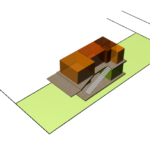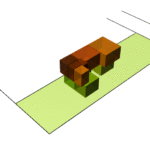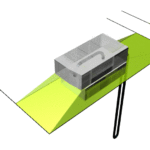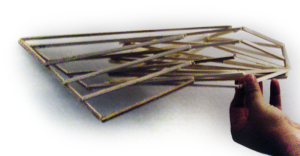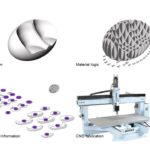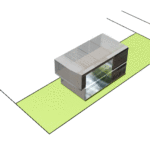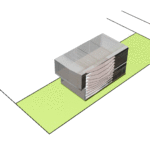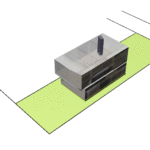10 Basic parameters in home design
Parametric Architecture
Architecture is not a style of particular buildings, nor is it the drawing of building plans; it is a process of problem solving mixed with aesthetics that results in information (drawings) used for construction. For a home or a city, it is a process embedded with parameters / variables that need to be solved and organised within themselves as well as between each other.
Parametric design is an open-ended methodology, based on systems thinking using analogue and computational tools. To write a single guide to parametrics in architecture is impossible as these methods are ever changing and individual to each designer. We are perhaps able to give some guidance to the important parametric variables in specific archetypes, such as for home parameters. In this guide I will focus on the core parameters for the design of homes.
Parametric design is still an avant-garde design theory, so there are many factors that need to be considered before starting the design process. Firstly, the practical rule of construction: Cost, Time and Quality. The rule is a Venn diagram where only two options can intersect.
Whether you are designing a single home or multiple unit housing development, they all share some primary design parameters that can be designed and solved using computational design methods. In some cases these parameters will simply fall into place, while in others a compromise has to be met.
The 10 basic parameters below need to be analysed and developed both on their own, and in relations to the others. A design is an equilibrium between variables/parameters. It is rare that any design is able to result in highest optimal level for all parameters. A compromise, or an equilibrium is usually decided on by the architect.
If parameters are optimised in aggregate through computational modelling, there is currently a limit of 5-6 variables / parameters that can be optimized at any given time. This is due to the limits of the algorithm used.
1. Circulation
The external access and internal circulation strategy are defining factors for the dwelling layout. Does the site have one or more access options? Is there an obvious main and secondary access? Does the form of the site dictate a specific circulation strategy or layout?
For multi unit design, fire regulations, maintenance and vertical circulation are a few of many variables to be taken into account.
2. Functional relationship
There are three basic scales of functional (or programmatic) relationships, external, multi-unit and internal.
- External functions should be considered in relations to the interior. Are there commercial or other residential programs around the dwelling, landscape functions, transport nodes etc? How are these dealt with in terms of use? A nice café will have different relationship to the dwelling than a kindergarten.
- Multi-unit dwellings will have shared and common functions such as cycle and refuse storage, common storage, parking, post and in more recent cases home-office and commercial functions.
- Internal functions are the spaces inside the dwelling. Where is the sitting room in relations to sunlight and external spaces? Where are the bedrooms in relations to escape routes?
3. Services
Closely related to the organisation of functions and circulation, services need to also take note of external connections as well as the need to vertically stack services in their placement. Services are also one of the core considerations in terms of sustainability. How can the proposal for the home reduce use of parameters such as water, material and energy? Will it have rainwater storage for grey water? Solar or wind energy with battery storage? Bidet loo to reduce loo-paper use? The material solutions are many and determined by the scale and location of the dwelling/s. The rule is to reduce consumption first and look at production as low secondary parameter. The concept of off-grid is going more main stream and parametric design is a core strategy for this.
4. Structure
The ability to analyse and optimise structure as the building goes through the design process is one of the greatest tools available to parametric architects. Material properties and calculations are easily coded into computational models with responsive structural models to simple pass-fail outputs.
Input variables need to include the material properties of the structure, whether it is timber, steel, concrete or carbon, along with deal loads etc.
Structural system strategy needs to considered early on. Is it a grid system or nonlinear complex structures? Other factors will influence the systems choices, but computational modelling makes the ability to use complexity more viable now than before.
5. Mass customization using CNC manufacturing
The development of robotic manufacturing means that the ability to create multiple bespoke components is becoming ever more affordable. The most common manufacturing is CNC routering of flat sheet material and plasma cutting of metals. Increasingly other techniques like full scale 3D printing, carbon fibre weaving and other technologies are coming on-line.
It is important to understand the various additive or subtractive fabrication techniques and develop an inclusive workflow from design to fabrication and assembly. Computational design and manufacturing has allowed for shorter and just-in-time fabrication and manufacturing that are mass customized to the project.
6. Daylight
Although obviously interconnected with sunlight these parameters need to be treated differently. While daylight is a positive input into homes, direct sunlight is not always good.
Light from different directions is not the same in colour, strength or effect. Architects use light and shadow to “paint” space for atmospheric effect.
- Size and location of window openings will control the daylight factor in internal spaces. An architect will want to use daylight information to control the light effects.
- The depth of the building plan versus the space height and window sizes determine the functionality of internal spaces. Light quickly falls away from windows.
- The massing of new building mass will affect the neighbour’s access to daylight. This is legislated in many areas and can have a major impact on the building design.
- Electric light is another variable best discussed on its own. The changes of light over the day from morning to night needs to be considered in it’s totality.
7. Sunlight
Closely related to daylight, but with its own particular problems and solutions.
 Direct sunlight in cold climates is a positive factor, especially in winter. This can be used to heat up internal thermal mass, such as stone floors, to lower power consumption.
Direct sunlight in cold climates is a positive factor, especially in winter. This can be used to heat up internal thermal mass, such as stone floors, to lower power consumption.- In warmer climates, direct sunlight will lower the habitable quality of internal and external spaces. Here the sunlight has to be reduced, while not limiting the internal daylight quality.
- Where summer sun is negative and winter sun is positive, there is a different shading requirement for summer and winter. The most useful tool here are seasonal plants. Trees produce leaves in the summer that create shade, and loose the leaves in winter to open spaces up to direct sunlight.
8. View
There are many factors to views that need to be considered. Views are one of the main considerations for people buying and living in homes. Creating both conflict and delight.
View from home.
- Long views are views to mountains and the sea. The arrangement of windows and external spaces for these views become more complicated in build-up areas or dense nature. The complexity of view arrangements is also increased with the input of other variables on this list. Manhattan in New York has long views over the Hudson River, but is impacted by other buildings
- Medium views are views down a street, over roofscapes or to a near park for example.
- Short views are views into a courtyard, garden, and to neighbouring buildings. European cities like Paris or Barcelona are constructed around these kinds of views and the quality of local architecture becomes an important factor. The privacy of neighbours is also a variable that needs to be considered.
Views to home
- Privacy is a key factor here. Controlling external views into the home, while allowing quality views from the home is an equilibrium that needs to be met. We also don’t want to present solid masses against neighbours as this will affect the quality of neighbourhood social comfort not listed here.
- Controlling external experience of the design. How is it viewed by visitors vs. neighbours? How is it viewed in relations to its surrounding? Is it juxtaposed, or integrated? Is the home or parts of the design seminal, hidden or merged into the context?
9. Wind and ventilation
Wind is important for quality of life in and around the home with parameters of different types of wind. Some are long and constant, such as the Provençal winds the Mistral, while other areas have frequent squalls with bursts of high winds.
In cold regions, wind is usually a negative factor in terms of quality of external spaces, wearing of building materials and energy use to name a few.
Using wind diagrams and computational information this can be controlled and levitated focusing on the primary wind directions e.g.
In warm regions wind is mostly positive and can be used as a cooling and ventilation factors.
Coastlines offer morning and early evening breeze; mountains can have katabatic and/or anabatic winds. Location and time matter greatly for the correct management of wind parameters.
10. Culture
Culture is a variable that clearly demarcates the Internationalist ideology of the Modernist and Post-Modernist movement from what came before and after. Culture was dismissed modernism in place of a machining vision of society. Seeing culture as a social construct that needs to be stripped away from humanity for an architectural purity.
Culture is mainly being explored today through the architectural style of Regionalism. This has been steeped in pastiche historical copies and is more costly due to less use of mass-produced modern components. Regionalism has not been very popular amongst architects due to this and the use of decoration, a thoroughly reproached concept within Modernism.
Within parametric design culture should matter greatly. In different cultures family structures and internal dynamics within families vary greatly. Privacy and communality, individuality to parity, hierarchy to heterogeneous. Understand who you are designing for, both within the home and externally is essential. Ignoring this is not parametric.
Aesthetic and material cultures also vary and do need to be considered. An international style is in its conception not parametric.
Out of all the home parameters discussed here, Culture is the least explored properly within parametric design. The challenge is to solve this without falling into the trap of the historical pastiche.
The above list is not complete and each project will offer its own challenges and design parameters. One popular element I have not included is pure form-finding. Using digital tools to explore geometries, patterns and forms is a great way to explore aesthetics, search for inspirations of find accidental solutions. However, presenting the immediate results as a design proposal is not parametric design, but a Post-Modern approach to architecture using the power of computational tools. More on this later.
Happy Parameterizing.
By Gudjon Thor Erlendsson
© 2020 Gudjon Thor Erlendsson, all rights reserved.
